Introducing the Hyperlite Mountain Gear Crux
The Arena Media Brands, LLC and respective content providers to this website may receive compensation for some links to products and services on this website.
Today Hyperlite Mountain Gear launched a new ski mountaineering pack, designed in conjunction with Cody Townsend. It’s called the Crux, it’s got a claimed 40 liter capacity at a 1242 gram weight, costs $499, and is designed for big, technical days in the mountains, like those depicted in the next season of the Fifty Project.
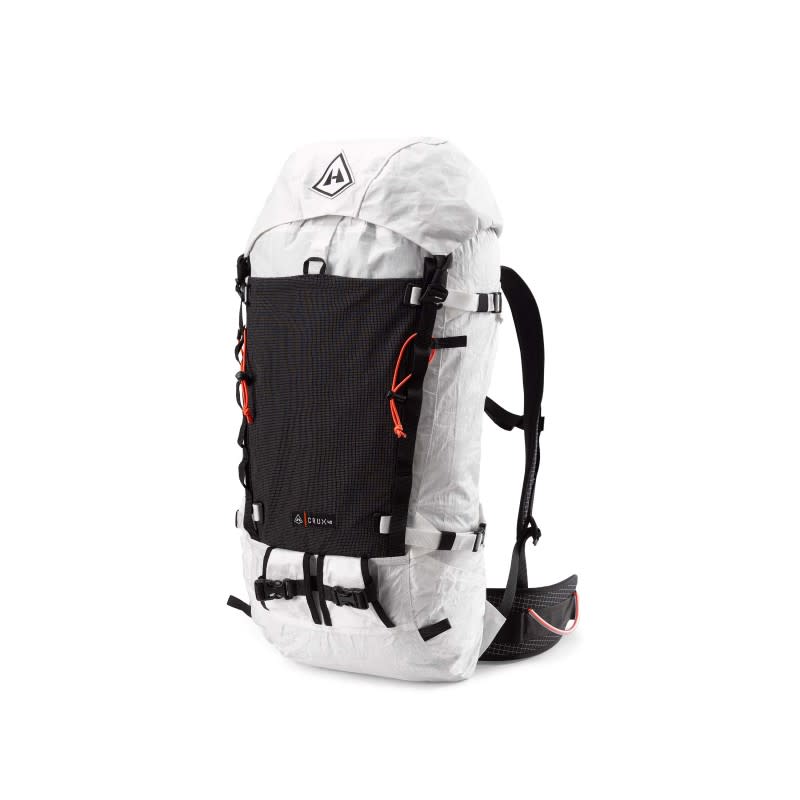
Photo: HMG
We previously reviewed the first pack Cody and HMG collaborated on, the Headwall 55. Bria came away generally impressed with the pack, but had a few notes about access and usability that apparently were prescient because the big story with the Crux is that it’s the first Hyperlite pack to have back panel access. That might not seem like a huge deal, but when you’re building your packs as light as possible, to carry heavy loads comfortably, it can be challenging to work that feature in, along with frame stays.
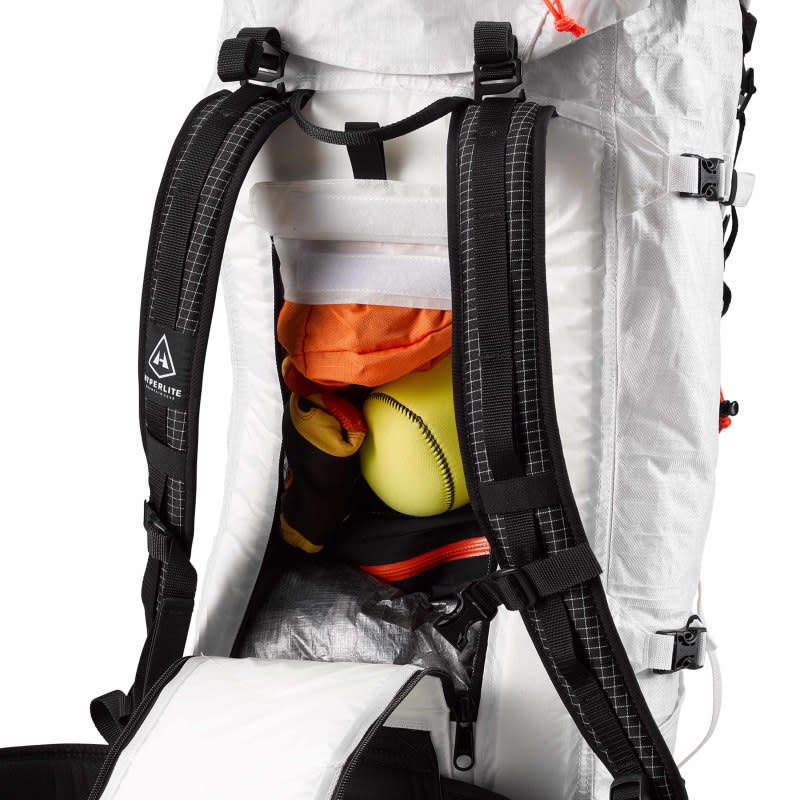
Photo: HMG
We’re really excited to get time in the new Crux pack this winter and put together a full review. It looks like a very well thought out, carefully designed pack that’s been optimized for long, technical ski objectives. We’ve got some thoughts and speculations we’re excited to share in the full review, but for now, here’s the details on the new pack, straight from Cody Townsend:
(Cy) Going into the design process of the Crux, how much were you tweaking Hyperlite's existing packs and features, vs. asking them to create new things from the ground up?
(Cody) The Crux is a bit of both when it comes to tweaking an existing product in HMG’s line and building from the ground up. While we had free rein to design from scratch, the basic outline for the pack was based upon their Ice Climbing / Alpinism pack called the Prism. Since the Crux was designed to go into similar places, but with skis on your back, it was a great outline that had already been tested and validated by scores of alpinists and climbers. But after that, there had to be some sort of ground up design thought since the back panel entry that was essential to me and other ski mountaineers provided such a unique challenge to the engineering of a traditional HMG pack. It took a lot of thought and creativity from the designers to provide this feature, while still abiding by the HMG principles of making lightweight packs that carry loads supremely well.
Do you see the Crux as more of a replacement for or a complement to the Headwall 55? If it's more of a "two good packs for different types of skiers" situation, what's your guidance for folks choosing between the two packs?
The way I see it, the Headwall is a Ski Touring pack and the Crux is a Ski Mountaineering pack. While both could be used for both aspects of backcountry skiing, most ski touring days don’t require much of your pack other than carrying all the gear you need and having your rescue equipment readily available. As soon as you get into the steeps, start using technical mountaineering equipment, that’s when you need more features, more unique design elements and more doo-dads to make your movement through the mountains more efficient and safer. To me, if you ever pack a rope in your pack, you’ll want the Crux. If you don’t ever think of using a rope while ski touring, then the Headwall is for everyday touring and overnights in the backcountry.
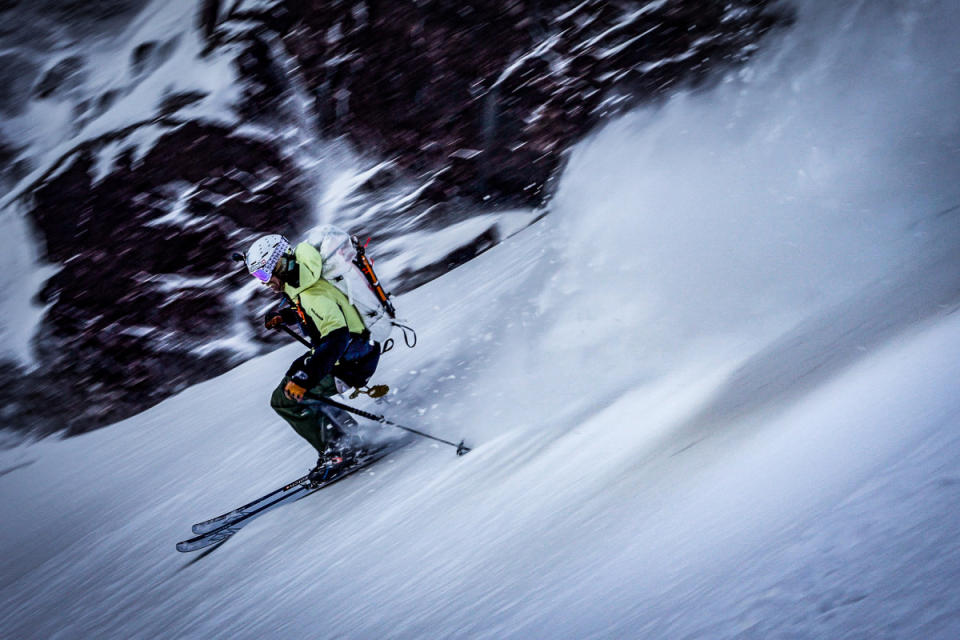
Photo: The Fifty Project
Were there any trips or experiences in particular that influenced aspects of the Crux's design?
I’d say every steep transition from crampons to skis, or skis to crampons, was what I had in mind when helping design this pack. Those are critical moments in the mountains, moments that often can feel perilous and nerve wracking, so having a pack that aided in those situations when it comes to extracting necessary equipment from your pack was how this pack was designed. It’s why it’s called the Crux. It was designed for the crux of your day.
Can you give a brief description of your role in the design process? Were you cutting up cardboard and taping together protos? Did you mail Hyperlite's designer's a list of demands in a ransom note? Packs are, IMO, some of the most personal and impactful products we use, and I'm just really interested in how you went about making what, I assume, is your favorite one yet?
This is my favorite pack yet and I think I used it for about 95% of my backcountry days last year. To get to that point, it started with a sketch I horribly sketched up and a bunch of bullet points on everything from critical design features to the level of importance for each feature and why each feature was being requested. I like the designer to understand the “why” of what I’m asking for, so they can take my thoughts and improve upon it or make it in a more creative solution than I might have previously thought. I am not a product designer, so making thoughts into reality isn’t what I excel at, so I want professional, vetted and career designers to come up with the solutions. I just am often thinking in the mountains…”Now what would make my life easier right now” and try to think up solutions.
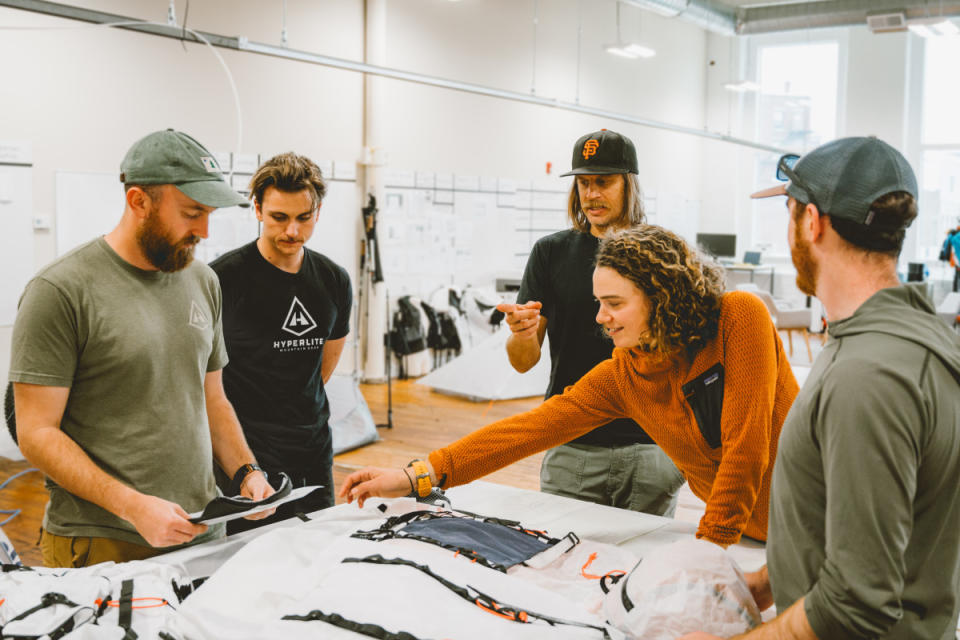
Photo: HMG
Any aspect of this pack/its design process that you wish more people would ask or care about?
The pack structure! Often packs with back panel entries don’t support weight well and HMG’s unique structure to their packs make them carry weight super well. But in order to achieve both ideals, there was a lot of trickery to make both work. Additionally, the unique positioning of the avalanche gear makes for a pack that gives structure to your packs so the pack sits on your back comfortably, distributes weight efficiently and doesn’t bounce around on your back at all. The structure of the pack makes it feel lighter on your back than in your arms, which is nice when you're skiing down exposed steep terrain.
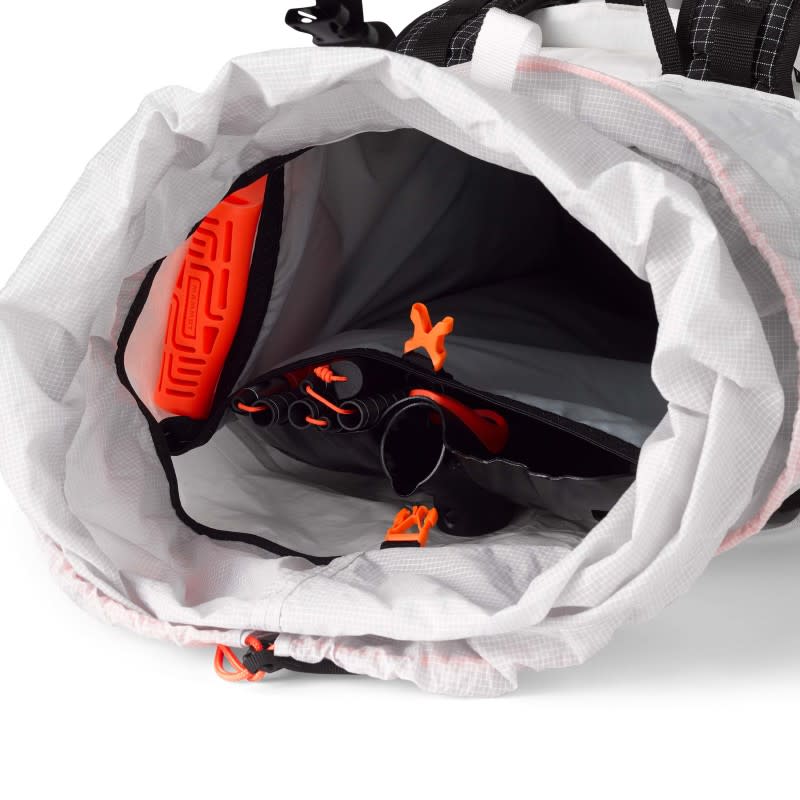
Photo: HMG
You've done a really good job of tying your name/personal brand to the brands and products you represent, does that have any impact on your reaction to seeing them out in the world? Do you get tired of folks (like myself) using phrases like "the Cody pack" as shorthand for products you helped develop?
I have quite a lot of products with my name on them these days and to be honest, it’s kind of embarrassing at this point. Like, I’m not some design genius or anything, so sometimes it feels a bit weird personally. But with that, I guess I just think a lot about products while out in the mountains and brands have started listening to my ideas more since there has been a decent track record of customer stoke with the products I’ve helped design.
Oh and yeah, there is a ton of reaction from me seeing products with my name on them out in the wild…usually pure nervousness! I want the products to stand out for them because of the product itself, not because my stupid name is signed on the product somewhere. To me, the only way I will put my name to something is if I think it will add to someone’s day, for the product to work better for their needs and serve an actual function for them. So when someone is wearing or using something I helped design, I usually sheepishly ask how it’s working for them and look for any minuscule sign of satisfaction to quell my nerves. Lastly, for the term like, “The Cody Pack”…whatever people want to call them is fine by me, as long as they don’t call it shit, I’ll be happy.
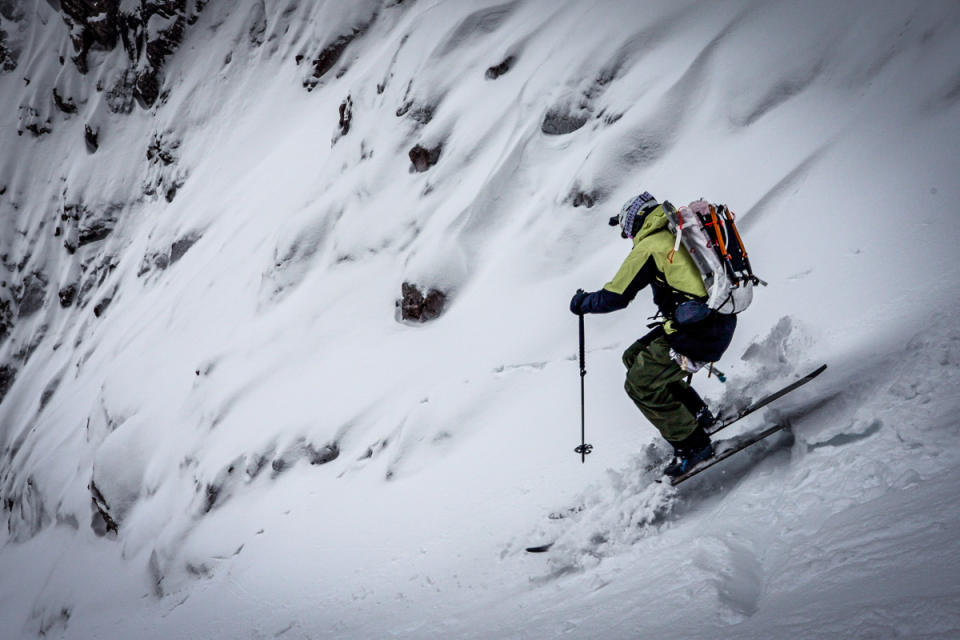
Photo: The Fifty Project
For Now
Packs are one of the most interesting and personal pieces of ski gear out there. We each have our own very specific set of priorities that we want our pack to be dialed for, and it’s really cool to see Cody and HMG be so upfront with their rationale for this pack. We’re excited to spend a bunch of days in it, and put a full review out once the snow is falling.

